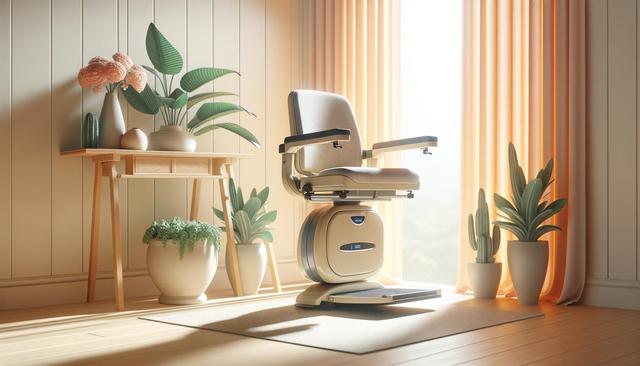
Navigating Stairs with Ease: The Role of Mobile Stairlifts
Understanding What a Mobile Stairlift Is
A mobile stairlift is a portable, motorized device designed to assist individuals with reduced mobility in traversing staircases. Unlike traditional stairlifts that are permanently installed on a staircase, mobile stairlifts are not fixed and can be used on multiple staircases in various locations. This makes them particularly useful for environments where permanent installation is not feasible or for individuals who require stair assistance in more than one setting.
These devices typically consist of a motorized base, a seat or platform, and safety features such as seatbelts or armrests. Mobile stairlifts are operated by a caregiver or, in some cases, by the user themselves, depending on the model. Their design offers a combination of portability, safety, and ease of operation, making them a valuable mobility aid in both private and public spaces.
Key Benefits of Mobile Stairlifts
One of the standout advantages of mobile stairlifts is their versatility. They can be used in a variety of locations, making them ideal for home use, hospitals, schools, and public buildings. Here are some of the key benefits:
- Portability: Easy to transport and store, which is ideal for temporary needs or shared use.
- Non-permanent Installation: No need for structural modifications, which is beneficial for renters or temporary setups.
- Accessibility: Makes multi-level buildings more accessible without the cost or complexity of installing an elevator or permanent stairlift.
- Caregiver-Friendly: Designed for ease of operation, often requiring minimal training.
For people recovering from surgery, dealing with chronic conditions, or aging in place, mobile stairlifts offer a dignified and efficient way to navigate stairs and maintain independence.
Types of Mobile Stairlifts Available
There are several types of mobile stairlifts available, each suited to different needs and environments. The most common types include:
- Tracked Stairlifts: These have tracks that grip the stairs, providing stability. They often require a second person to assist in operation.
- Wheelchair Stairlifts: Designed to accommodate a wheelchair, these models allow the user to remain seated in their own chair while being transported up or down stairs.
- Seated Mobile Stairlifts: Suitable for individuals who can transfer from a wheelchair or walk short distances but need help on stairs.
When choosing a type, consider factors such as the user’s physical capability, the environment where the stairlift will be used, and who will be operating it. Consulting with a mobility specialist can help determine the most appropriate model for specific needs.
Considerations Before Purchasing
Before investing in a mobile stairlift, several practical considerations should be evaluated to ensure it meets the user’s requirements. Important aspects include:
- Staircase Design: Some models are better suited for straight staircases, while others can handle curved or narrow stairs.
- User Weight Capacity: Devices have varying weight limits, so it’s essential to choose a model that supports the user safely.
- Battery Life: Since mobile stairlifts are often powered by rechargeable batteries, knowing how long a charge lasts is crucial for planning usage.
- Storage Space: Check if the stairlift can be folded or disassembled for easy storage when not in use.
Additionally, it’s wise to review warranty options, customer support availability, and maintenance requirements. These factors can significantly influence the long-term usability and reliability of the device.
Maintenance and Safe Use
Regular maintenance and proper usage are key to ensuring the longevity and safe operation of a mobile stairlift. Though they are generally low-maintenance, some routine checks and care can help prevent issues. Safety should always be the top priority when operating or assisting with a stairlift.
- Routine Checks: Inspect the battery, tracks, and safety harnesses regularly to ensure everything is functioning correctly.
- Cleanliness: Keep the machine clean and free from dust or debris, especially around the wheels and motor areas.
- Storage: Store the stairlift in a dry, indoor location when not in use to protect it from environmental damage.
- Training: Any caregiver or user should be trained on safe operation, including emergency stop functions and correct handling procedures.
Many manufacturers offer instructional materials and customer support to assist with safe use and upkeep. Taking the time to understand the stairlift’s features and limitations can enhance both safety and user satisfaction.